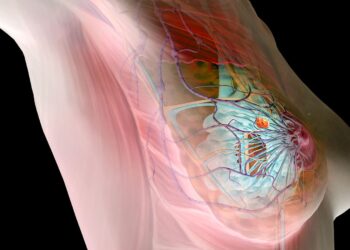FROM RAD 2023
The myriad of clinical tools available for assessing patients with atopic dermatitis may leave clinicians wondering how to best incorporate the tools into the daily clinical workflow.
“It can be overwhelming because there are many choices but so little time,” Jonathan I. Silverberg, MD, PhD, MPH, associate professor and director of clinical research in the dermatology department at George Washington University, Washington, DC, said at the Revolutionizing Atopic Dermatitis (RAD) Virtual Conference.
Assessment tools such as the Eczema Area and Severity Index (EASI), the Numeric Rating scale for itch (NRS-itch), and the Dermatology Life Quality Index (DLQI) “all correlate, but they’re all different, and there is value in all of them,” said Dr Silverberg. “Of course, you’re not going to use all of them, but which ones should you use?”
He favors a structured approach that considers signs, symptoms, and quality of life, a framework that he and Shanthi Narla, MD, proposed in an article published online in Dermatitis. In the United States, he said, the Investigator’s Global Assessment scale (IGA) and BSA are the preferred tools for assessing the clinical severity of AD.
“If you go to Australia and New Zealand, they love EASI, while in Western Europe, they love the SCORAD [SCORing Atopic Dermatitis] tool because they’ve been using it since the 1990s,” Dr Silverberg said. “So whatever works for you, pick it. But just use something that’s going to work within your practice setting. The IGA and the BSA are the easiest to do and the fastest to do in clinical practice. You’re going to have to document disease severity anyway if you’re going to get systemic therapies approved,” he said, referring to approval for coverage by the patient’s health insurance drug formulary.
Several Recommendations
Based on his clinical experience, Dr Silverberg recommended certain assessment tools as “feasible” to use in daily practice. In the domain of clinical signs, “the IGA and the BSA are the most useful,” he said. “If the patient is gowned up, it probably takes about 30 seconds to do an IGA scale, and a BSA can be done in under a minute, easily.”
In the domain of symptoms, he recommends having the patient or caregiver complete at least one of the following patient-reported outcome measures (PROMs): the NRS-itch, the NRS-pain, the NRS-Sleep Disturbance, the Patient Health Questionnaire-2 (PHQ-2), and either the Patient Global Assessment (PtGA) or the Patient-Reported Global AD Severity (PrtGA).
“Pick one or two that reflect what you can do in clinical practice,” Dr Silverberg advised. “The NRS-itch is clinically meaningful and takes 10 seconds to do. Or you can just ask the patient, ‘How do you rate your itch? Clear, mild, moderate, or severe?’ A verbal rating scale, like a Likert scale, would also work. Again, this takes 10 seconds to assess. This is not slowing you down in practice; it will speed you up in the long run.”
He favors the NRS scale assessments, “because the 2023 AAD guidelines for AD advocate for open-ended questions,” he said. “I can tell you from personal experience that when you go down that rabbit hole of open-ended questions, you’re never getting out of that exam room. If you ask a patient how AD affects their life, you might as well just plan on a 30- to 40-minute visit. But if you use structured questions, you can get the information you need so dearly to make the right assessments, but you can keep the visit moving efficiently.”
He noted that the NRS-itch or the PtGA and PrtGA tools “each take about 10 seconds to complete. I would argue that you could probably have the patient [complete all of these PROMs], and you’re still in under a minute, and you get incredibly rich information.”
In the quality-of-life domain, Dr Silverberg recommends that the patient or caregiver complete the DLQI. If there is additional time, he also suggests the Atopic Dermatitis Control Tool (ADCT) to gain further insight on symptomatology.
“The DLQI takes about a minute or minute-and-a-half to complete, while the ADCT takes about a minute,” he said. “It measures overall disease control, and there are some interesting individual questions there, such as how AD bothers them, how it impacts their sleep, how it impacts them emotionally.”
To optimize efficiency, Dr Silverberg recommends that patients or caregivers complete PROMs prior to the patient encounter by e-mail or on the patient’s online portal the night before. Freely available smart phone applications designed for AD patients can help them track their disease symptoms, such as EczemaWise from the National Eczema Association.
“[The PROMs] can even be completed in the waiting area; a lot of times we’re running behind anyway,” he said. “Even if we’re not, it can be done in a minute or two while they’re filling out their insurance paperwork or whatever. Patient-reported outcomes can also be collected by the medical assistant or nursing while rooming the patient.”
Administering such structured assessments prior to the actual patient encounter “seems counterintuitive because you’re asking seemingly more information, but that doesn’t matter, because you are asking it in an efficient, structured manner, and you are getting the information you need,” he noted. “These tools can also help fill in the gaps of telehealth encounters.”
Dr Silverberg reported being a consultant and/or an adviser for many pharmaceutical companies. He has also received grant or research support from Galderma and Pfizer.
This article originally appeared on MDedge.com, part of the Medscape Professional Network.
Source link : https://www.medscape.com/s/viewarticle/assessing-patients-atopic-dermatitis-tools-use-office-2024a100008n?src=rss
Author :
Publish date : 2024-01-04 07:06:07
Copyright for syndicated content belongs to the linked Source.














